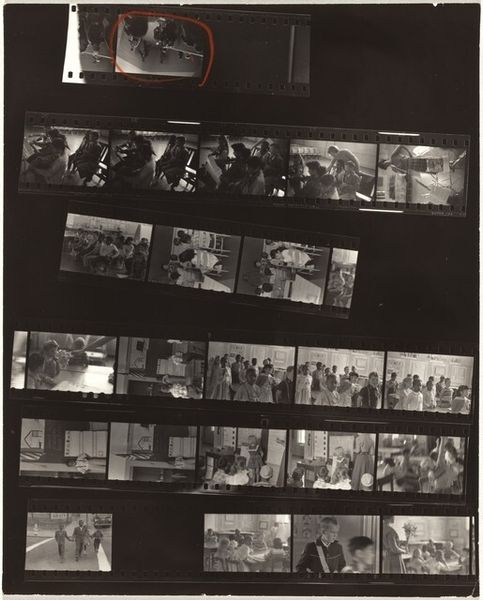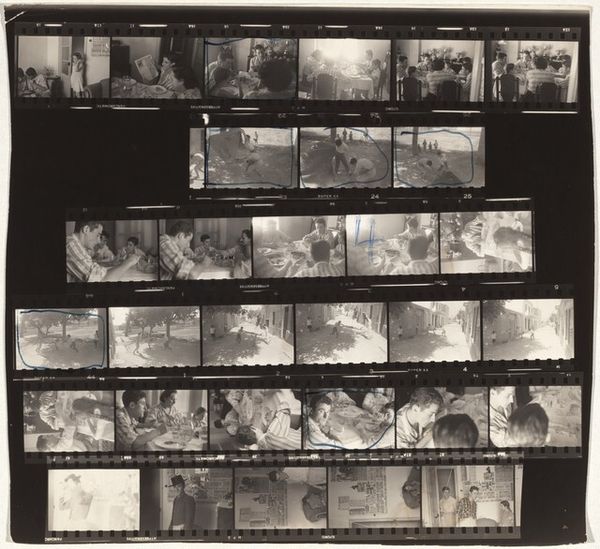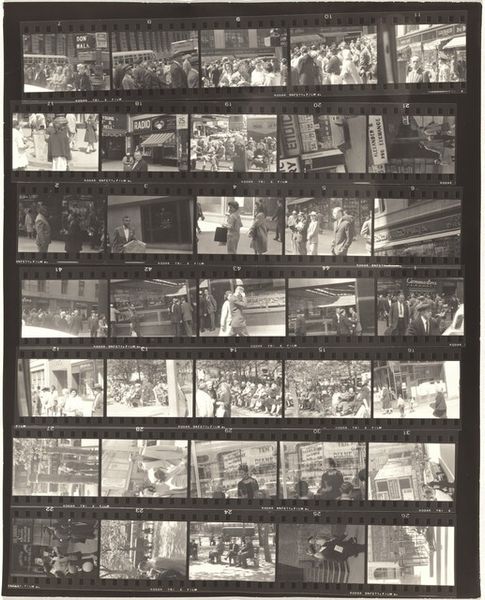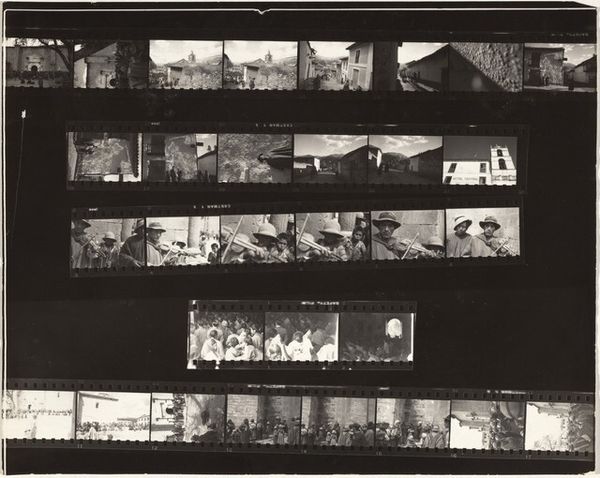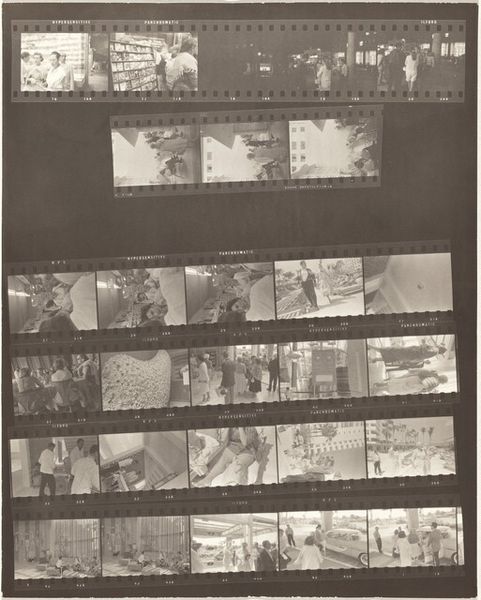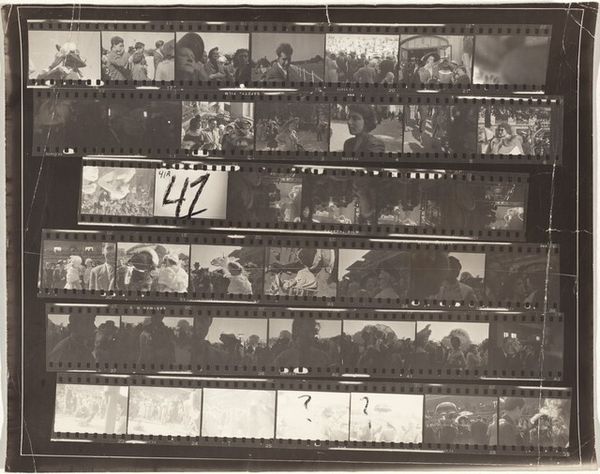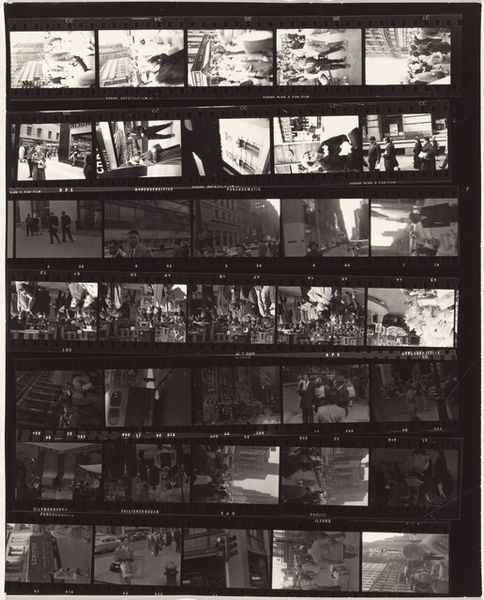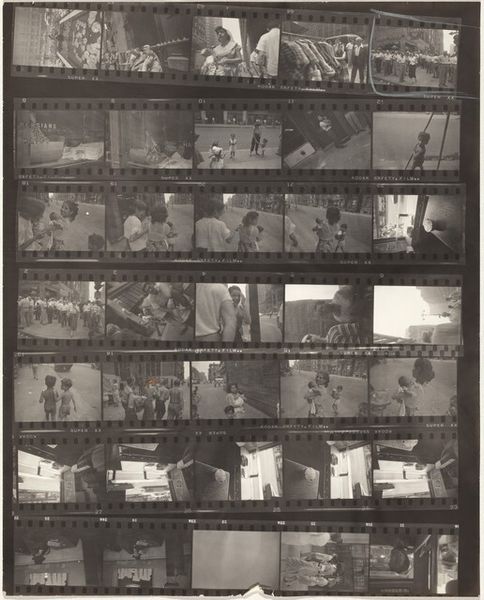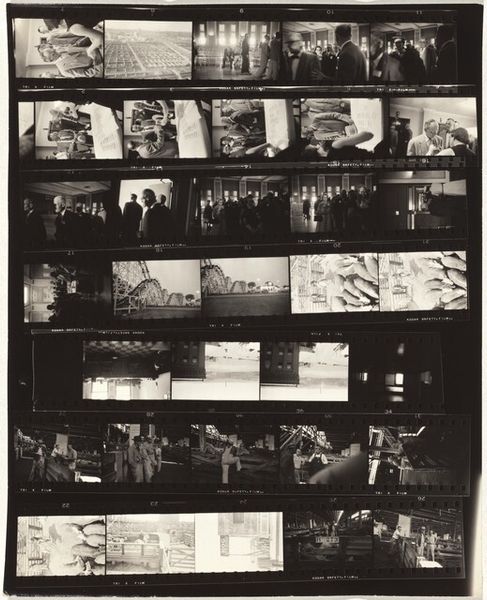
contact-print, photography
#
film photography
#
black and white photography
#
contact-print
#
warm monochrome
#
archive photography
#
street-photography
#
photography
#
monochrome photography
#
realism
#
monochrome
Dimensions: overall: 21.8 x 25.6 cm (8 9/16 x 10 1/16 in.)
Copyright: National Gallery of Art: CC0 1.0
Editor: Here we have Robert Frank's "Valencia, Spain 31," a contact print from 1952. Seeing the full strip of images laid out like this, it feels like flipping through someone's memories or a visual diary. What catches your eye most about this particular piece? Curator: Well, what strikes me is the intentionality behind showcasing the raw, unedited film strip itself. It invites us to consider photography not just as a means of capturing reality, but also as a medium deeply implicated in power dynamics. How do we, as viewers, navigate the gaze inherent in street photography, especially considering the era and the photographer's position? Editor: That’s interesting, I hadn’t considered that angle. The way you see these strips as representing some kind of "power dynamic." Can you tell me a bit more? Curator: Consider Frank's position as an outsider, a Swiss photographer documenting post-war Spain under Franco's dictatorship. The act of observation itself becomes a political act. This contact sheet, with its intimate glimpses of everyday life, presents a counter-narrative to the officially sanctioned imagery of the regime. Do you notice how these fleeting moments can reveal a subtle critique of the socio-political climate? Editor: I see what you mean. There's a contrast between the apparent candidness and the inherent control the photographer wields. Is that fair? Curator: Exactly! And further, we might explore how the presentation of the contact sheet itself challenges notions of artistic authority and authorship. It allows us to glimpse the photographer’s process, making it less about the decisive moment and more about the complex relationship between photographer, subject, and context. Does thinking about it this way change how you feel about it? Editor: It does. Seeing it as more than just a series of snapshots really reframes the whole artwork for me. Curator: Yes. It moves the piece beyond mere documentation to a space of critical inquiry, urging us to consider whose stories are being told and how. Editor: It makes me consider the photographer's role and their influence on the images they create and the stories they communicate, and how as viewers, our context inevitably colours our interpretation too.
Comments
No comments
Be the first to comment and join the conversation on the ultimate creative platform.


